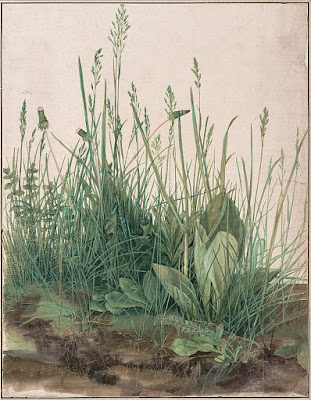It not only gets you through terrible weather, it keeps your brain supple.
| Eventually, my easel fell into this manure pile. Of course. |
The end of this week is dripping, sloppy and cool in the northeast. Nevertheless, there are painters trying to knock out paintings at events on Cape Ann and in the Hudson Valley. When they’ve committed to paint, they don’t have much choice but to succeed.
“100% chance of heavy rain tomorrow. more sun but much colder and windy on Friday. Cold and windy and cloudy on Saturday. Sunday there’s a reception in Middletown; that’s the day its sunny, but cold,” Elissa Gore noted on Wednesday. That’s a forecast that has the artist scrambling to pack every possible contrivance against the weather. Their only comfort is that every person in the event is facing the same lousy conditions.
 |
| Watch Her Paint! by Ed Buonvecchio. He painted this as we sheltered inside during a torrential downpour. (Private collection.) |
Wind makes you wish you had five hands, because, outdoors, every item in your kit has the potential to go airborne. We can weigh down our easels, but umbrellas are useless. It’s difficult to clamp down a large canvas, so we switch gears and paint smaller. Or, we huddle in the lee of our cars, sacrificing the best view for what is possible.
Last week my class painted at a blueberry barren in Union, ME. The forecast was for fog, and when we arrived the clouds were kissing hilltops. My students’ value studies were developed accordingly. By 11 AM, the sky was clear, and the scene had changed entirely. It takes flexibility to salvage a painting in such radically shifting light. But it can be done.
| Obstacles can include a garbage truck, as in here, in Manhattan. |
Rain and snow are almost impossible obstacles for watercolorists. Even under cover, their paper just won’t dry. It’s almost as bad for oil painting. Once the moisture settles on your paints, any mixing creates a rigid emulsion of water and oil.
If you set up in a public place you stand the risk of something or someone getting between you and your view. It’s one thing if it’s a person. It’s another if it’s a delivery truck.
Or, a lovely boat is in harbor when you arrive and you decide to include it. You’re half-finished when you realize the lobsterman is preparing to leave. Even without people, boats move constantly on the water, and always according to their own mysterious plan.
 |
| Or the obstacles might be tourists, as here, in Camden harbor. |
So how do you avoid coming home with a fistful of half-finished paintings? You learn to be flexible, to sub in other details for the ones that just vanished. You learn the cycles of places: the rotation of boats on their moorings, or when the food truck arrives and departs. You get creative about draping and bracing your easel to protect it. And, above all, you learn to paint fast.
All of those are signs of cognitive flexibility. This is the ability to switch your thinking or focus, or entertain multiple ideas or viewpoints at once. It’s an important part of learning and thinking. It’s one that declines through adulthood, sadly. The young brain is simply more plastic than the older one.
But your brain responds to exercise just like your body responds to yoga. The more you have to scramble, the better you get at it. Next time your easel falls down, remind yourself that you’re not just there making brilliant work. You’re exercising your cognitive flexibility.















